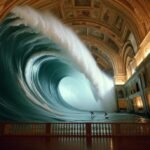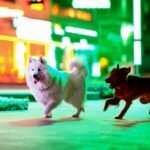1. Introduction
In an era where artificial intelligence is reshaping the creative landscape, a groundbreaking model named Sora stands out for its exceptional capabilities in video generation. Developed by OpenAI, Sora represents a significant leap in AI’s ability to create realistic and imaginative scenes from textual descriptions. This blog post delves into the unique aspects of Sora, exploring how it differentiates itself from other AI models and its profound implications in various fields.
2. Background and Development of Sora
The journey of AI in video generation has been marked by continual advancements, with each new model bringing us closer to seamlessly bridging the gap between artificial imagination and visual representation. The development of Sora marks a pivotal moment in this journey. Born from the convergence of various AI disciplines, Sora is the culmination of extensive research and innovation in generative models.
Key to Sora’s development has been the concept of large-scale training on diverse video data, including videos and images of variable durations, resolutions, and aspect ratios. This approach, inspired by the success of large language models (LLMs), has allowed for the creation of a more versatile and robust model. The team behind Sora, comprising experts like Tim Brooks, Bill Peebles, and Connor Holmes, has played a crucial role in pushing the boundaries of what’s possible in video generation.
3. Technical Innovations of Sora
At the heart of Sora’s capabilities are several technical innovations that set it apart from previous models. One of the key features is the use of diffusion models, which are specifically trained to generate videos and images spanning diverse durations and resolutions. This approach enables Sora to produce up to a full minute of high-definition video, a notable achievement in the field.
Another core aspect of Sora’s architecture is its reliance on spacetime latent patches. These patches act as transformer tokens, allowing the model to handle visual data in a highly scalable and effective manner, similar to how LLMs use text tokens. This technique is crucial for training generative models on a wide range of visual data.
Moreover, Sora employs a transformer architecture, known for its scalability and effectiveness across various domains like language modeling, computer vision, and image generation. This architecture, combined with Sora’s diffusion model approach, allows for the generation of high-quality videos with improved framing and composition, even in challenging scenarios like varying aspect ratios and resolutions.
These technical innovations form the foundation of Sora’s ability to simulate the physical world with remarkable fidelity and creativity, setting a new standard in AI-driven video generation.
4. Unique Features of Sora
Sora sets itself apart with several distinctive features that redefine the scope of AI in video generation:
- Text-to-Video Transformation: Sora’s most remarkable feature is its ability to transform text prompts into detailed, realistic videos. This capability extends beyond mere literal interpretation, allowing the model to grasp and visualize complex narratives and abstract concepts.
- Video-to-Video Editing and Extension: Sora can also modify existing videos, adding new elements or extending them in time. This feature is particularly useful for creating longer narratives or adding to pre-existing content without losing coherence or quality.
- Image Animation: Another innovative feature of Sora is animating static images. By infusing life into still pictures, Sora opens up new possibilities for storytelling and content creation.
- 3D Consistency and Long-Range Coherence: Sora maintains spatial and temporal consistency across its generated videos. This includes maintaining the 3D structure of scenes and ensuring that objects and characters remain coherent over time, even when they move out of the frame.
5. Creative Applications of Sora
Sora’s unique capabilities have vast implications across various creative domains:
- Film and Animation: In the film industry, Sora can assist in pre-visualization, storyboarding, and even creating short film sequences, significantly reducing the time and effort required in these processes.
- Digital Marketing: For digital marketing, Sora offers a tool for creating high-quality video content quickly and efficiently, catering to the ever-growing demand for engaging visual content in marketing campaigns.
- Educational and Training Simulations: In education, Sora can be used to create realistic simulations and scenarios, aiding in more immersive and effective learning experiences.
- Art and Design: Artists and designers can leverage Sora to bring their visions to life, experimenting with new forms of visual storytelling and digital art.
6. Comparative Analysis
When compared to other AI video generation models, Sora demonstrates several key advantages:
- Versatility in Video Generation: Unlike many of its predecessors, Sora is not limited to short clips or constrained resolutions. It can generate videos of up to a minute long, in various aspect ratios and resolutions, making it more versatile and applicable in diverse contexts.
- Quality and Coherence: Sora’s ability to maintain the quality and coherence of videos over longer durations and through complex scenes sets it apart from other models, which often struggle with these aspects.
- Intuitive Text-to-Video Conversion: The model’s sophisticated understanding of language and its ability to interpret and visualize complex prompts is a significant leap forward, offering more intuitive and creative control to the user.
In summary, Sora’s blend of technical innovation, creative flexibility, and advanced features positions it as a leading model in the realm of AI-driven video generation. Its capabilities not only surpass those of its contemporaries but also open new horizons for the application of AI in creative industries.
7. Limitations and Challenges
Technical Limitations
Despite its advanced capabilities, Sora is not without its limitations. For instance, it may struggle with accurately simulating the physics of complex scenes or understanding specific instances of cause and effect.
Ongoing Challenges
- Spatial Detail Confusion: Sometimes, Sora may confuse spatial details in a prompt, like mixing up left and right.
- Long-Duration Coherence: Maintaining coherence in longer sequences remains a challenge, as the model may lose track of certain narrative elements over time.
- Further Refinement Needed: There is ongoing work to refine Sora’s understanding of nuanced and complex prompts, particularly those that involve intricate storytelling or detailed scenes.
Weakness: Simulating complex interactions between objects and multiple characters is often challenging for the model, sometimes resulting in humorous generations.
8. Safety and Ethical Considerations
Content Verification and Detection
- Misleading Content Detection: OpenAI is developing tools to detect whether a video was generated by Sora, helping to distinguish AI-generated content from real footage.
- C2PA Metadata: Plans include incorporating C2PA metadata in future OpenAI products featuring Sora, enhancing traceability and transparency.
Ethical Safeguards
- Red Teaming and Policy Compliance: Expert red teamers are engaged in adversarially testing Sora, identifying potential areas of misuse. The model will also be subject to strict policy compliance checks to prevent the generation of harmful content.
- Image Classification for Policy Adherence: Robust image classifiers review each video frame generated by Sora to ensure adherence to usage policies, filtering out content that violates guidelines on violence, sexual content, and more.
Community Engagement and Feedback
OpenAI is actively engaging with policymakers, educators, and artists worldwide to understand their concerns about AI-generated content and identify positive use cases. This engagement is crucial in navigating the complex ethical landscape surrounding AI technologies like Sora.
9. The Future of Sora
Anticipated Developments
- Enhanced Realism and Complexity: Future versions of Sora aim to achieve even greater levels of realism and detail, handling more complex scenes and interactions.
- Improved Long-Duration Coherence: Efforts are underway to enhance Sora’s ability to maintain narrative and visual coherence over longer video sequences.
- Broader Application Spectrum: OpenAI is exploring ways to expand Sora’s applications, potentially venturing into areas like virtual reality, augmented reality, and more interactive media experiences.
Research and Collaboration
- Ongoing Research: OpenAI continues to invest in research to address Sora’s current limitations, particularly in the areas of physical simulation and long-duration video generation.
- Collaborative Efforts: Partnerships with industry leaders, academic institutions, and creative professionals are expected to play a key role in Sora’s evolution.
10. Conclusion
Sora represents a monumental step forward in the realm of AI-driven video generation. Its unique features – from transforming text to video, editing existing videos, to animating static images – set it apart in the AI landscape. While it faces challenges like maintaining long-duration coherence and simulating complex physical interactions, its potential applications in filmmaking, digital marketing, education, and beyond are immense.
The ethical considerations and safety measures surrounding Sora highlight OpenAI’s commitment to responsible AI development. As we look towards the future, Sora’s continued evolution promises to unlock even more creative possibilities and further bridge the gap between artificial intelligence and human creativity.
11. References and Further Reading
For those interested in exploring more about Sora and its capabilities, the following resources offer in-depth information and insights:
- OpenAI’s Official Sora Page: https://openai.com/sora
- Technical Paper on Sora’s Development: Provides detailed information on the technical aspects and innovations behind Sora.







